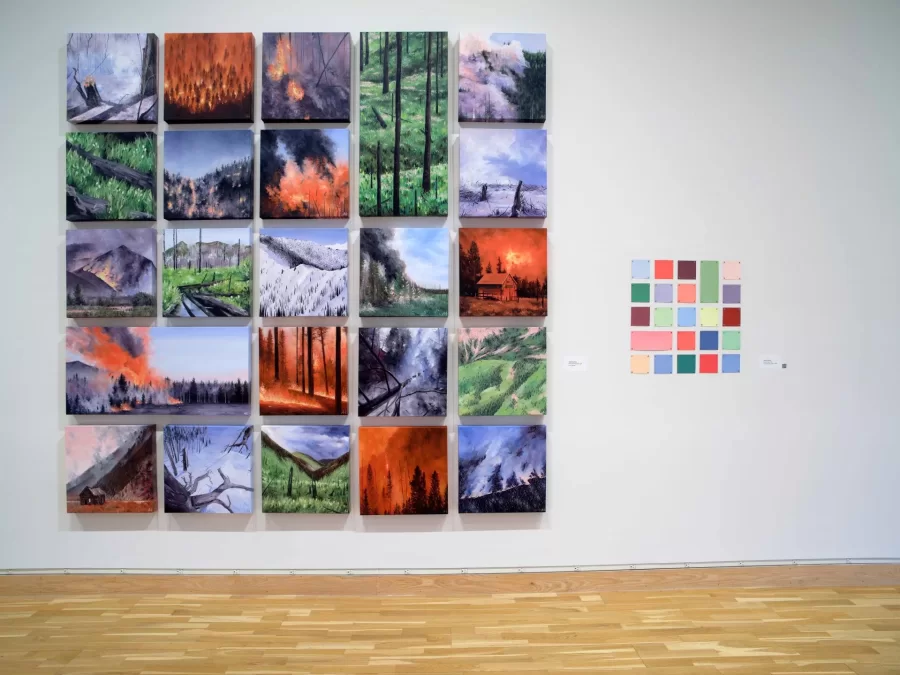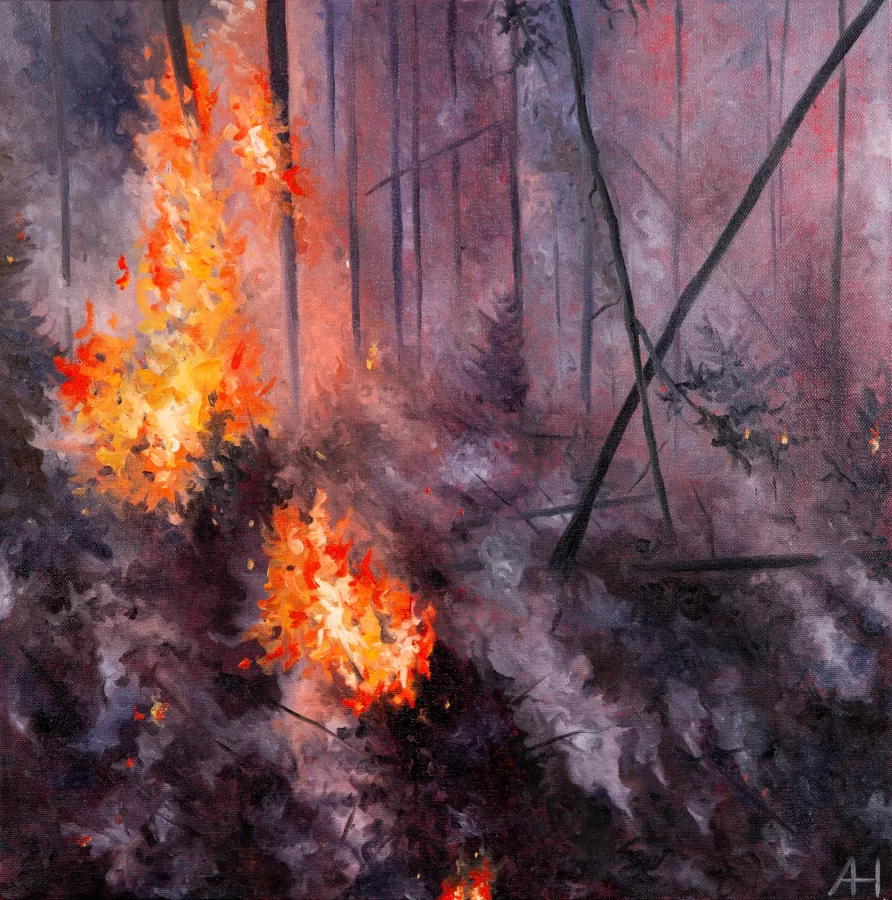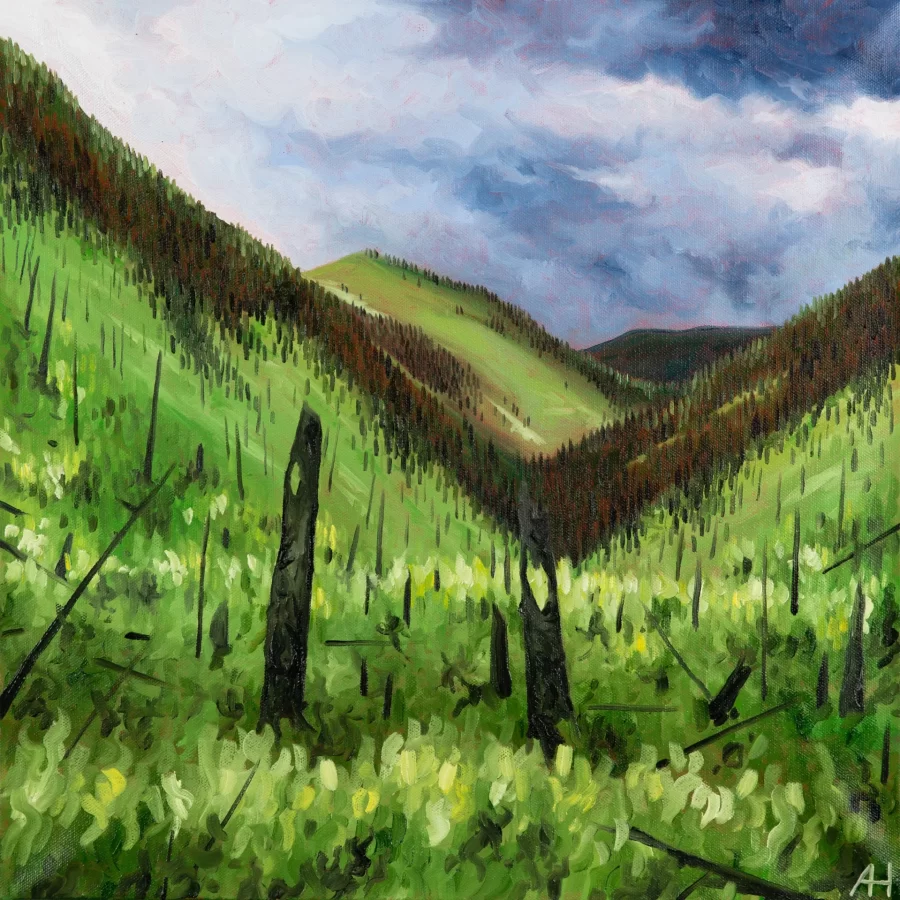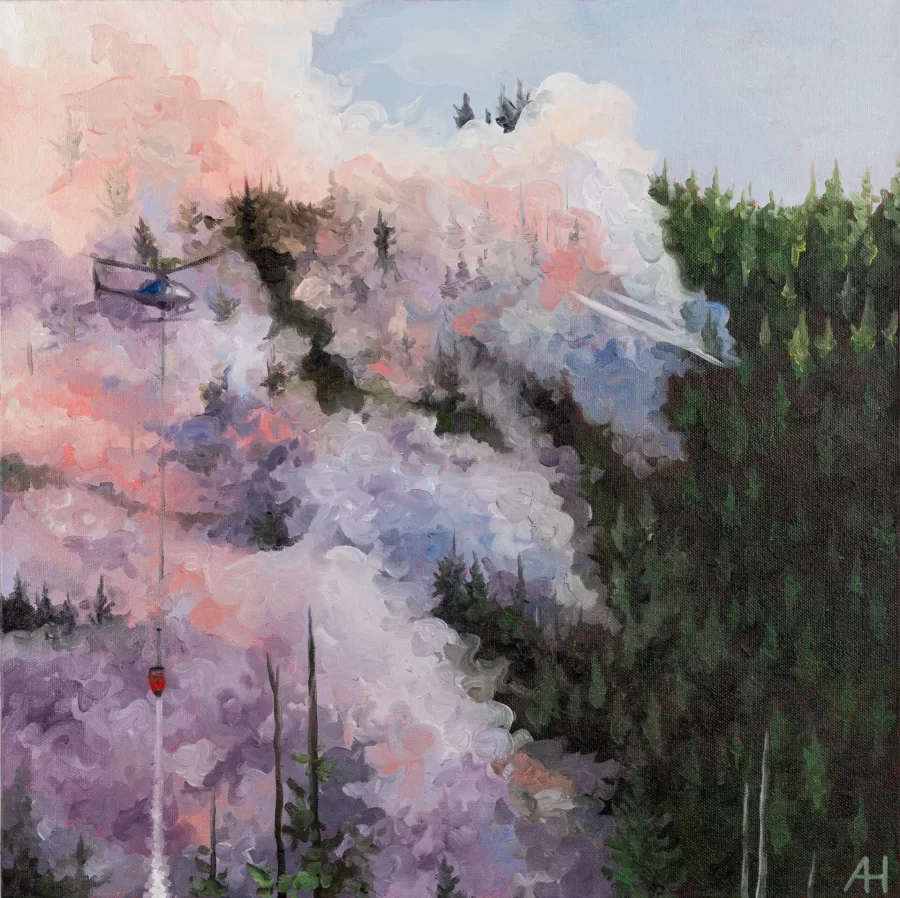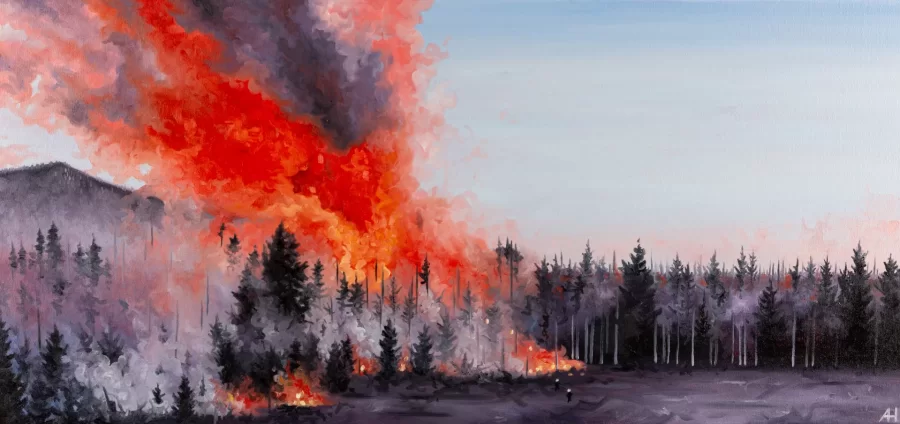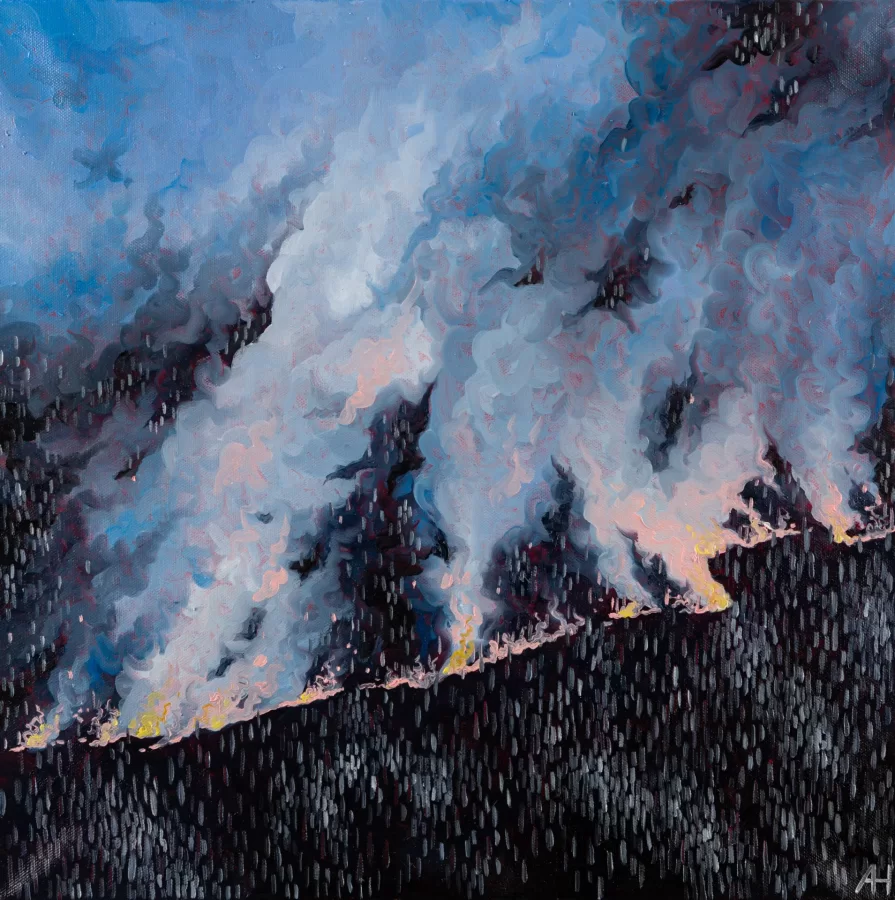Amelia Hawkins
Living in Idaho for most of my life, there has been a common thread which never changes through the years. I consider Idaho to have five seasons: Fall, Winter, Spring, Summer and Smoke. Once August rolls around, the smoke rolls in with it. Forest fires are inevitable here. They have been for centuries, and can actually be good for the cycles of the ecosystem. Fires reduce dead vegetation and stimulate new growth, resulting in overall improvements of wildlife habitats. These good consequences cannot happen if fires occur too frequently. Over my lifetime, the frequency of local fires and smoke coming from fires in California and Canada has increased. Summer camp was often canceled due to unhealthy air quality. I remember asking my mom, “Where are all these ashes coming from?” This has always stuck with me, and I wanted to show this aspect of my life in my current work.
Working in oil on square and rectangular canvases, I paint scenes representing the different stages of forest fires. The scenes with bright flames reflect the early stage when the fire has just started. Days, weeks, or months later, the fire will go out. It will reveal scenes of barren forest, with hazy ash and smoke. Winter will soon come when glistening snow falls all around the dead trees, creating patterns of blue shadows on mountain faces. The snow will start melting in May and regrowth will begin. A lush landscape, full of lupin flowers, will emerge at the base of the dark burned trees. It is an amazing cycle which captivates me every year.
I am interested in the juxtaposition of the destructive chaos of the early stages and serenity of the later stages. Given my love for pattern design, I knew I wanted to create a pattern conveying these different environments. With that intention, I painted a variety of colorful scenes in identical square and rectangular formats that would then be unified within the arrangement of a grid. To further my vision, I was also inspired by the work of Philip Juras who depicts forest fires in his paintings. He often works from direct observation, painting fire adapted landscapes of the Southeast. Like Juras, I experiment painting with faster brushstrokes to evoke the essence of a fire in real time. I hope my work provides a glimpse of forest fires and the consequences they bring to our world.
